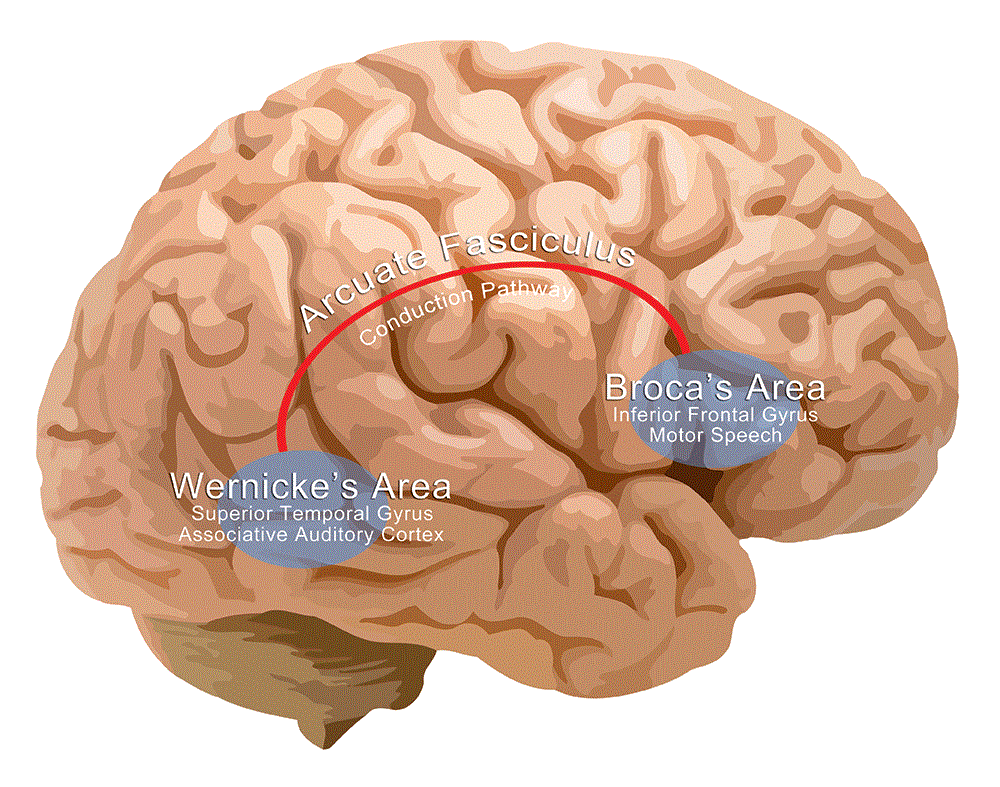WBR0578
Jump to navigation
Jump to search
| Author | [[PageAuthor::Rim Halaby, M.D. [1] (Reviewed by Yazan Daaboul, M.D.)]] |
|---|---|
| Exam Type | ExamType::USMLE Step 1 |
| Main Category | MainCategory::Pathophysiology |
| Sub Category | SubCategory::Neurology |
| Prompt | [[Prompt::A 71-year-old right-handed man with a past medical history significant for coronary artery disease and hypertension presents to the emergency department for acute-onset right arm weakness and speech difficulty. The patient is not able to speak in full sentences and answers by saying: "Ummm...Ummm..Not move..Ummm arrr...arm". Whenever the physician asks him a question, the patient tries to answer by using hand gestures. Which of the following brain regions is most likely responsible for the patient's speech dysfunction?]] |
| Answer A | AnswerA::Superior temporal gyrus |
| Answer A Explanation | [[AnswerAExp::Wernicke's aphasia is a speech dysfunction characterized by impaired comprehension, intact speech fluency, and impaired repetition. It results from damage to the superior temporal gyrus. Wernicke's aphasia is also known as sensory or receptive aphasia.]] |
| Answer B | AnswerB::Inferior frontal gyrus |
| Answer B Explanation | [[AnswerBExp::Broca's aphasia is a speech dysfunction characterized by intact comprehension, impaired speech fluency, and impaired repetition. It results from damage to the inferior frontal gyrus. Broca's aphasia is also known as motor or expressive aphasia.]] |
| Answer C | AnswerC::Superior temporal and frontal gyri |
| Answer C Explanation | [[AnswerCExp::Global aphasia is a speech dysfunction characterized by impaired comprehension, impaired speech fluency, and impaired repetition. It results from damage to a larger area of the brain that involves the superior temporal and inferior frontal gyri.]] |
| Answer D | AnswerD::Arcuate fasiculus |
| Answer D Explanation | [[AnswerDExp::Conduction aphasia is a speech dysfunction characterized by intact comprehension, intact speech fluency, and impaired repetition. It results from damage to the arcuate fasciculus.]] |
| Answer E | AnswerE::Area between the supplementary motor area and the frontal perisylvian speech zone |
| Answer E Explanation | [[AnswerEExp::Transcortical motor aphasia is a speech dysfunction characterized by impaired comprehension, impaired speech fluency, and intact repetition. It results from damage to the area between the supplementary motor area and the frontal perisylvian speech zone.]] |
| Right Answer | RightAnswer::B |
| Explanation | [[Explanation::The patient's sudden-onset right side weakness along with speech difficulty is consistent with a stroke that involves the middle cerebral artery (MCA). The patient seems to understand what the physician is asking but is finding difficulty articulating the words. The patient's intact comprehension and impaired fluency of speech result from involvement of the Broca's area in the left dominant frontal lobe. Involvement of the left frontal lobe also explains the contralateral arm weakness.
There are several types of aphasia:
Shown below is an image that depicts the different regions involved in aphasias. |
| Approved | Approved::No |
| Keyword | WBRKeyword::Aphasia, WBRKeyword::Broca's aphasia, WBRKeyword::Frontal lobe, WBRKeyword::Stroke |
| Linked Question | Linked:: |
| Order in Linked Questions | LinkedOrder:: |
